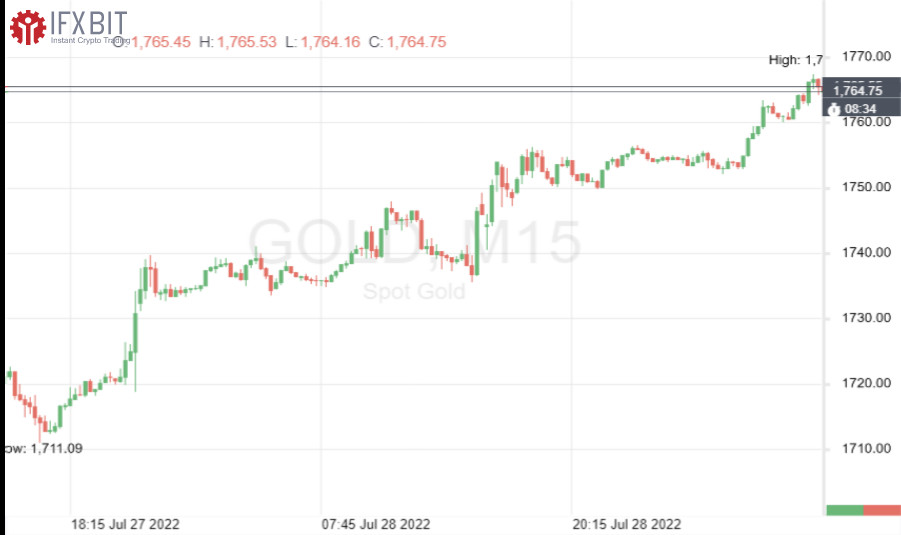
Gold closed the week on the upside. Since Monday, the asset has already gained 1.6%. This is the biggest weekly increase in bullion prices since May.
The precious metal performed best on Thursday. Gold futures added 1.8% to close at a three-week high of $1,750.30.

The asset price surged on gloomy US economic data. A preliminary Commerce Department report released on June 28 highlighted that the US GDP shrank by 0.9% in the second quarter.
Thus, the US economy shrank for the second quarter in a row. This indicates that a recession has formally begun.
The market now worries that a slowdown in economic growth could affect the pace of monetary tightening.
Notably, the Fed raised interest rates this week by 0.75% to combat record-high inflation again.
However, Jerome Powell made it clear that the Fed had moved rates to a roughly neutral zone. This means that the central bank is likely to raise the rate less aggressively.
A less hawkish stance by the regulator has a negative impact on US treasury bond yields and the dollar.
Gold has an inverse relationship to the US currency. So, it has benefited from the temporary weakness of the dollar. Despite impressive gains this week, bullion will still close July on the downside.
This will be the fourth consecutive monthly drop in the asset. However, this trend could be broken in August.
Experts believe that now that GDP data has confirmed a technical recession in the US, the attractiveness of gold as a safe haven is likely to grow. However, sellers have a long and very difficult job to do before taking control of the situation.
 Tiếng Việt
Tiếng Việt 
 Русский
Русский English
English Bahasa Indonesia
Bahasa Indonesia Bahasa Malay
Bahasa Malay ไทย
ไทย Español
Español Deutsch
Deutsch Български
Български Français
Français 中文
中文 বাংলা
বাংলা हिन्दी
हिन्दी Čeština
Čeština Українська
Українська Română
Română

